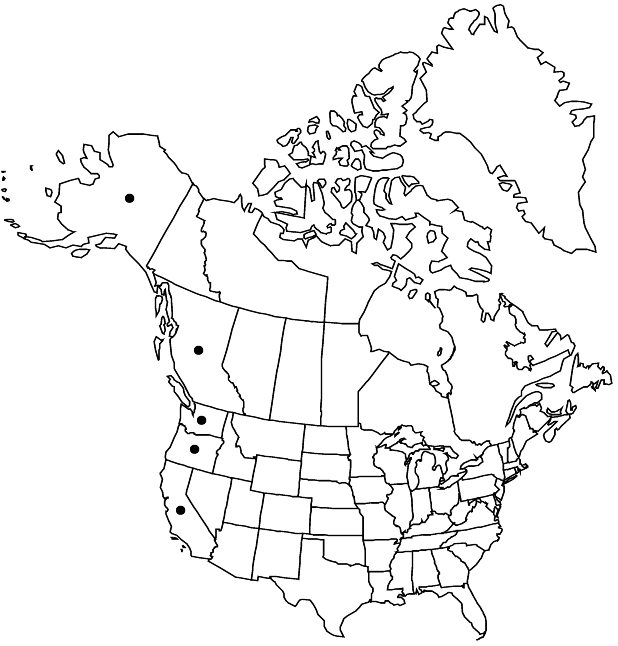Difference between revisions of "Dodecatheon pulchellum var. macrocarpum"
Sida 22: 863. 2006 ,.
FNA>Volume Importer |
imported>Volume Importer |
||
| (One intermediate revision by the same user not shown) | |||
| Line 81: | Line 81: | ||
|publication year= | |publication year= | ||
|special status= | |special status= | ||
| − | |source xml=https:// | + | |source xml=https://bitbucket.org/aafc-mbb/fna-data-curation/src/2e0870ddd59836b60bcf96646a41e87ea5a5943a/coarse_grained_fna_xml/V8/V8_571.xml |
|genus=Dodecatheon | |genus=Dodecatheon | ||
|species=Dodecatheon pulchellum | |species=Dodecatheon pulchellum | ||
Latest revision as of 22:44, 5 November 2020
Plants glabrous. Leaves (3–)5–20(–35) × (0.5–)1.5–5 cm; blade elliptic or narrowly ovate to ovate. Pedicels glabrous. Flowers: calyx glabrous; corolla tube yellow with red to maroon, thin, wavy ring, lobes magenta to lavender, 7–18(–20) mm; filament tube yellow, 1.7–2.7 mm; anthers (4.5–)5–8.5 mm; pollen sacs usually yellow, at least apically, sometimes maroon or faintly purplish, often with pink to maroon speckles or lines abaxially, connective maroon. 2n = 88, 132.
Phenology: Flowering late spring–summer.
Habitat: Moist tidal flats, marshes, stream banks, slopes and cliffs mainly in meadows or grassy areas in or near conifer woodlands
Elevation: 0-1800 m
Distribution

B.C., Alaska, Calif., Oreg., Wash.
Discussion
Of conservation concern.
Variety macrocarpum is a coastal polyploid. It ranges from Kodiak Island of south-central Alaska southward (including many islands) through British Columbia and western Washington to western Oregon. H. J. Thompson (1953) improperly lectotypified var. macrocarpum on a W. H. Brewer (217, GH) collection from the Santa Susana Mountains, Ventura County, California, even though the name was based solely upon a W. H. Dall (GH) collection from Middleton Island, Valdez-Cordova County, Alaska. The coastal phase in Alaska has larger leaves and generally taller plants; away from the immediate coast, it grades quickly into the more typical, shorter plants with smaller leaves. Plants at high elevations and well away from the coast are even smaller (only 0.6 dm tall) with leaves only about 3 cm long. The high-elevation, ecotypic extremes are genetically fixed (T. A. Suttill and G. A. Allen 1992) but do not seem worthy of taxonomic recognition. Some individuals near Anchorage have maroon pollen sacs (compare LePage 23112 and LePage 23113, DAO).
Selected References
None.